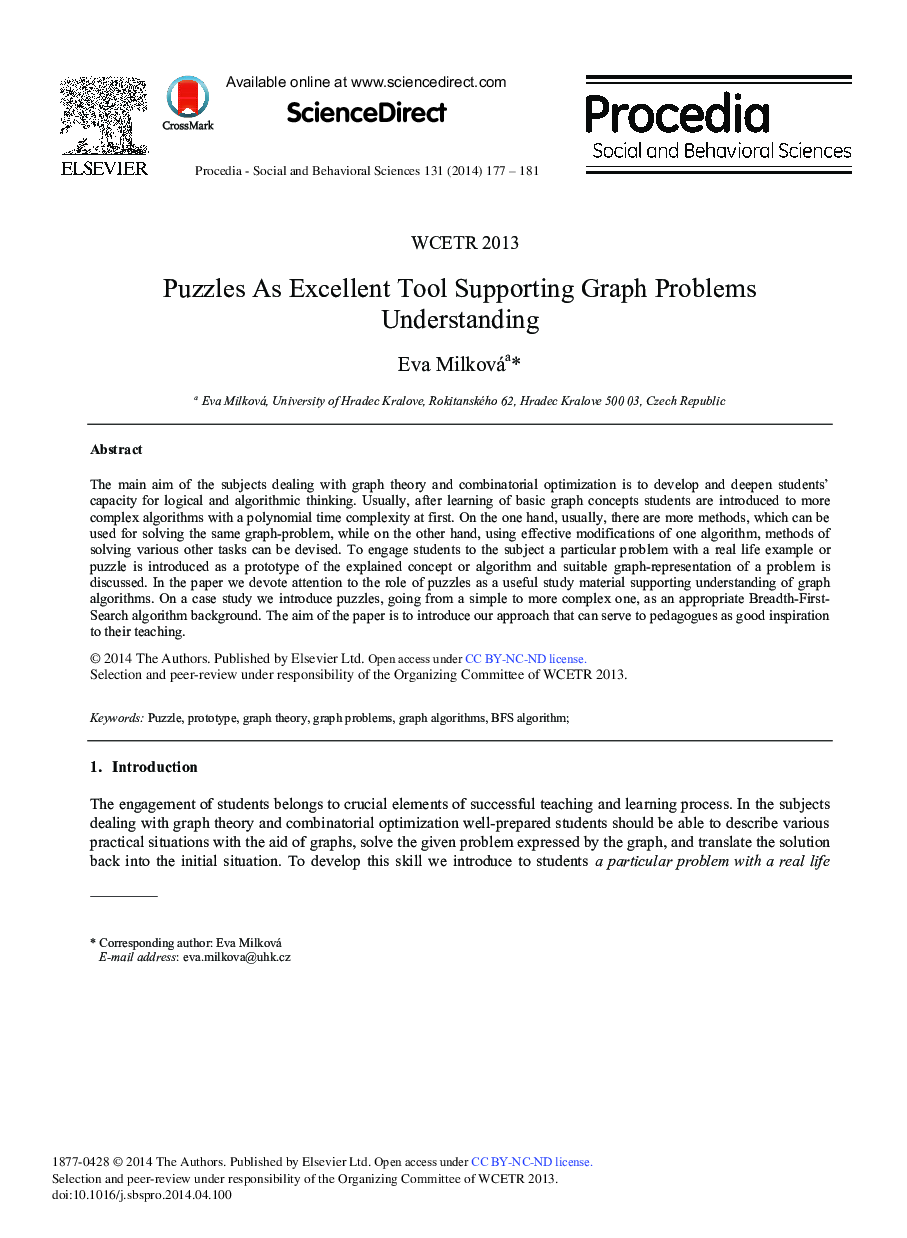| Article ID | Journal | Published Year | Pages | File Type |
|---|---|---|---|---|
| 1115065 | Procedia - Social and Behavioral Sciences | 2014 | 5 Pages |
The main aim of the subjects dealing with graph theory and combinatorial optimization is to develop and deepen students’ capacity for logical and algorithmic thinking. Usually, after learning of basic graph concepts students are introduced to more complex algorithms with a polynomial time complexity at first. On the one hand, usually, there are more methods, which can be used for solving the same graph-problem, while on the other hand, using effective modifications of one algorithm, methods of solving various other tasks can be devised. To engage students to the subject a particular problem with a real life example or puzzle is introduced as a prototype of the explained concept or algorithm and suitable graph-representation of a problem is discussed. In the paper we devote attention to the role of puzzles as a useful study material supporting understanding of graph algorithms. On a case study we introduce puzzles, going from a simple to more complex one, as an appropriate Breadth-First- Search algorithm background. The aim of the paper is to introduce our approach that can serve to pedagogues as good inspiration to their teaching.
